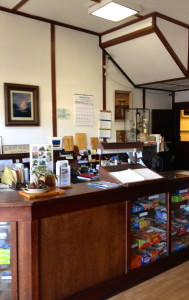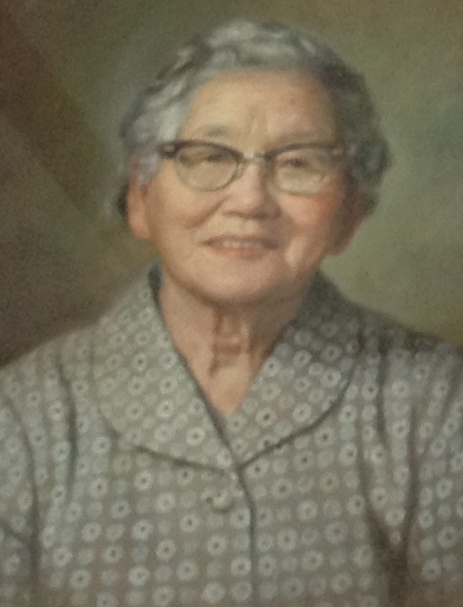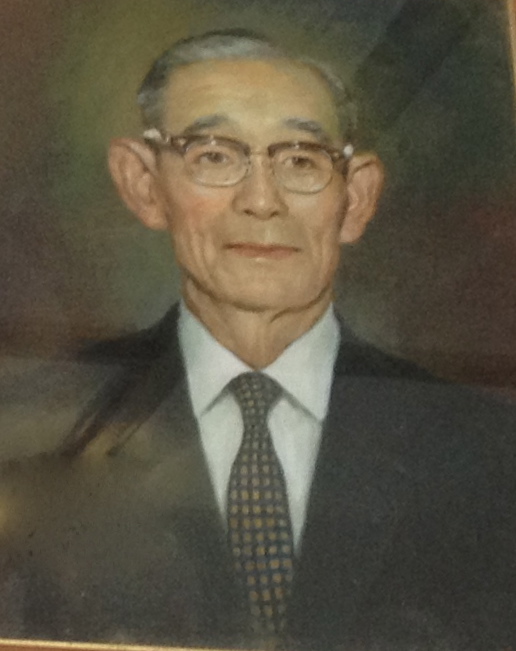
Staying the Manago Hotel in Captain Cook, Hawai`i is like accepting an invitation to join the family. Three generations of Managos collectively offer their hospitality when you step into the lobby with its old style counter space. Just sign the guest book, allow a credit card imprint, and take your key with its plastic holder.

Portraits of Kinzo and Osame Manago gaze down with a certain amount of benevolence, as if they join the desk clerk, who may be their grandson Dwight, in wishing you a pleasant stay.
Osame Manago was a picture bride from Fujioka, Japan who came to Hawai`i to escape harsh conditions at home. Her father was a farmer who had no sons. Osame’s father told Osame, “You are only a farmer’s daughter. What good does it do you to get more education for working in the fields or for business? If you can sign your name, that’s enough.” He allowed Osame to go through fifth grade, but said she would be a subject of laughter if she attempted high school.
Osame married when she was seventeen years old. She did not like her parents’ selection, a relative, and only agreed because they said if she could not stand him after three days, Osame could return home. The ceremony was for a trial marriage, not a legal one. Three days later, Osame told her husband’s family she was going to the toilet, and walked home under a full moon. Osame escaped a bad marriage but shamed her family. She decided to go where she would be forgotten, and if she ever returned to Japan, she wanted people to look up to her.
Several years before, Kinzo Manago left Japan to go to Canada and learn English. He and several friends departed for Honolulu, where they expected to board a boat for Canada. As luck would have it, one of the friends gambled away the money. They were stuck. Kinzo wrote his cousin in Canada, who sent him $20.00 to get back on his feet. Meanwhile, Kinzo discovered that he had another relative on the island of Hawai`i, so he took a steamer, and met his cousin in Kona. Shortly thereafter. Kinzo began working as a cook for the Wallace family, which is how he earned enough money for a picture bride.

Kinzo contacted his family who arranged for him to marry Osame. Later, Osame said she did not know how they heard of her, but “they thought I was a hard worker.” One would think Osame’s family was pleased by the match, but apparently there was some disapproval, because the Manago family was wealthier and this made the match uneven.
The wedding was a proxy ceremony in 1912. Osame stayed with her husband’s family in Kurume until she could book passage on a ship to Honolulu. At the exit station in Nagasaki, the inspector diagnosed Osame with hookworms. She could not travel until they were gone. Osame heard that if she ate a lot of nuts, it would be difficult to detect the hookworms, so her mother roasted nuts for her, and Osame passed inspection.
Between 1907 and 1923, over 14,000 picture brides arrived in Hawai`i from Japan. Upon arrival, many found their husbands did not look like the pictures. Many men were considerably older; others sent pictures of their younger friends. Brides swallowed their disappointment, and went to work.
Like other brides, Osame held Kinzo’s picture so she would recognize him on the dock in Honolulu. Was she happy, confused, or disappointed? There is no way to know how she felt upon meeting Kinzo for the fist time. The couple went through a second ceremony at a nearby Shinto temple. The next day, they left for Kona on the cramped interisland steamer. People, cattle, cargo – all together in the hold. Many people put mats out on deck. The boat landed at Kailua, and the couple took a cart up the rocky road to Captain Cook.
Kinzo worked full time chopping firewood. In 1917 he borrowed $100 from his former boss and purchased a two-room house, a cook stove and supplies. The couple set aside one room for their own use. In the other, Osame served homemade bread and jam to taxi drivers traveling from Kona to Hilo. As they were able, the couple added rooms and a second floor while expanding food service to include full meals and sake. For those who chose to spend the night, the Managos charged $1.00 to sleep on a tatami mat.
By the end of 1930, the couple had seven children, and the business brought in $20.00 per day. Two turbulent decades lay ahead of this First Generation Japanese couple. More in next week’s blog.
[Quotations from Michi Kodama-Nishimoto, Varren S. Nishimoto, & Cynthia A. Oshiro, Hanahana: An Oral History Anthology of Hawaii’s People. University of Hawaii Press, 1995. Additional Sources: Anon. “Staying True to Tradition,” West Hawaii Today, November 29, 2006. Bertil Long, Big Island Trading Post-West Hawaii Edition, April 17, 1985. Naomi Sodetani, Honolulu Star-Bulletin, February 19, 1985.]
Photos by Author. All Rights Reserved.

Sandra Wagner-Wright holds the doctoral degree in history and taught women’s and global history at the University of Hawai`i. Sandra travels for her research, most recently to Salem, Massachusetts, the setting of her new Salem Stories series. She also enjoys traveling for new experiences. Recent trips include Antarctica and a river cruise on the Rhine from Amsterdam to Basel.
Sandra particularly likes writing about strong women who make a difference. She lives in Hilo, Hawai`i with her family and writes a blog relating to history, travel, and the idiosyncrasies of life.

